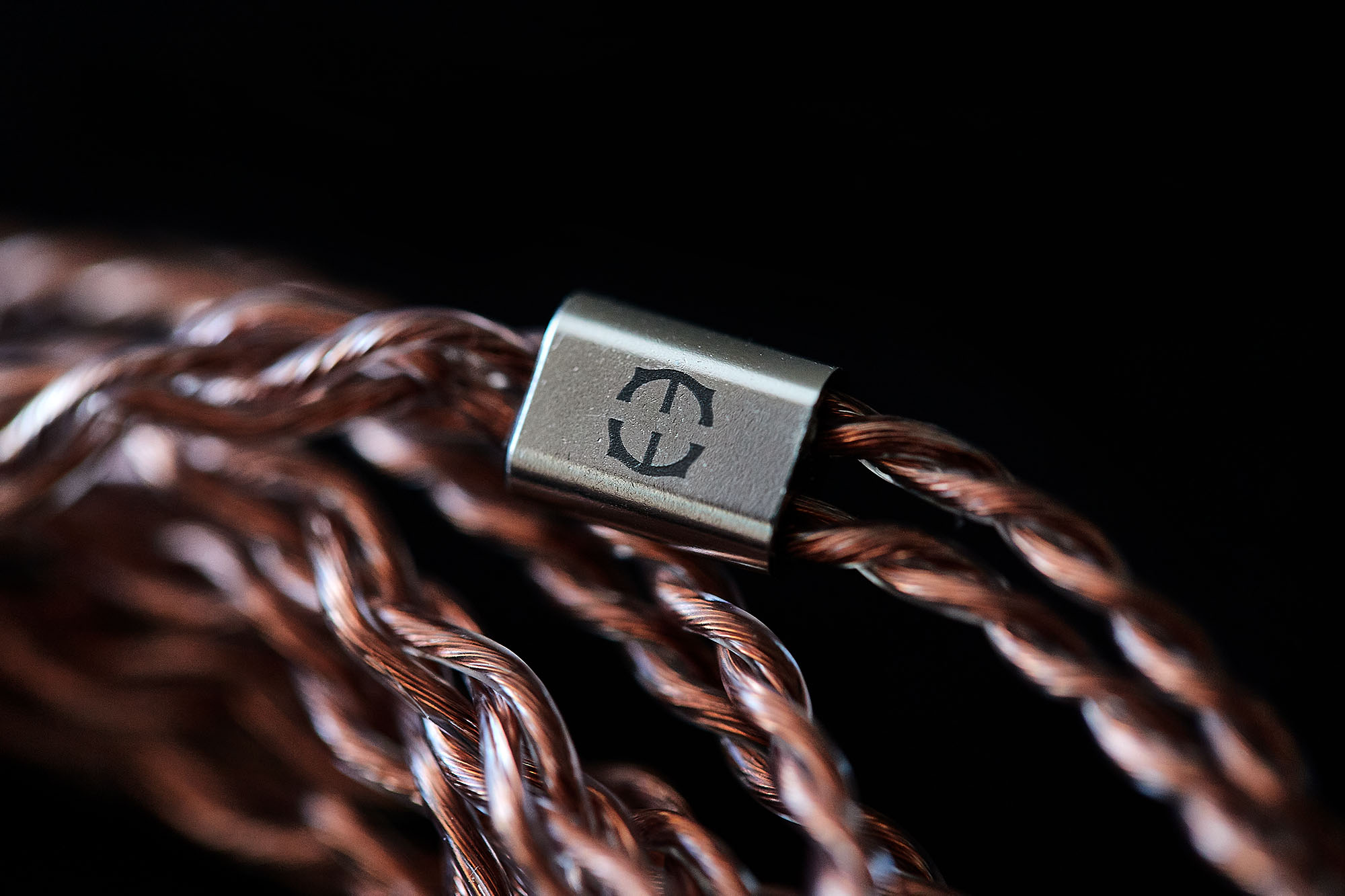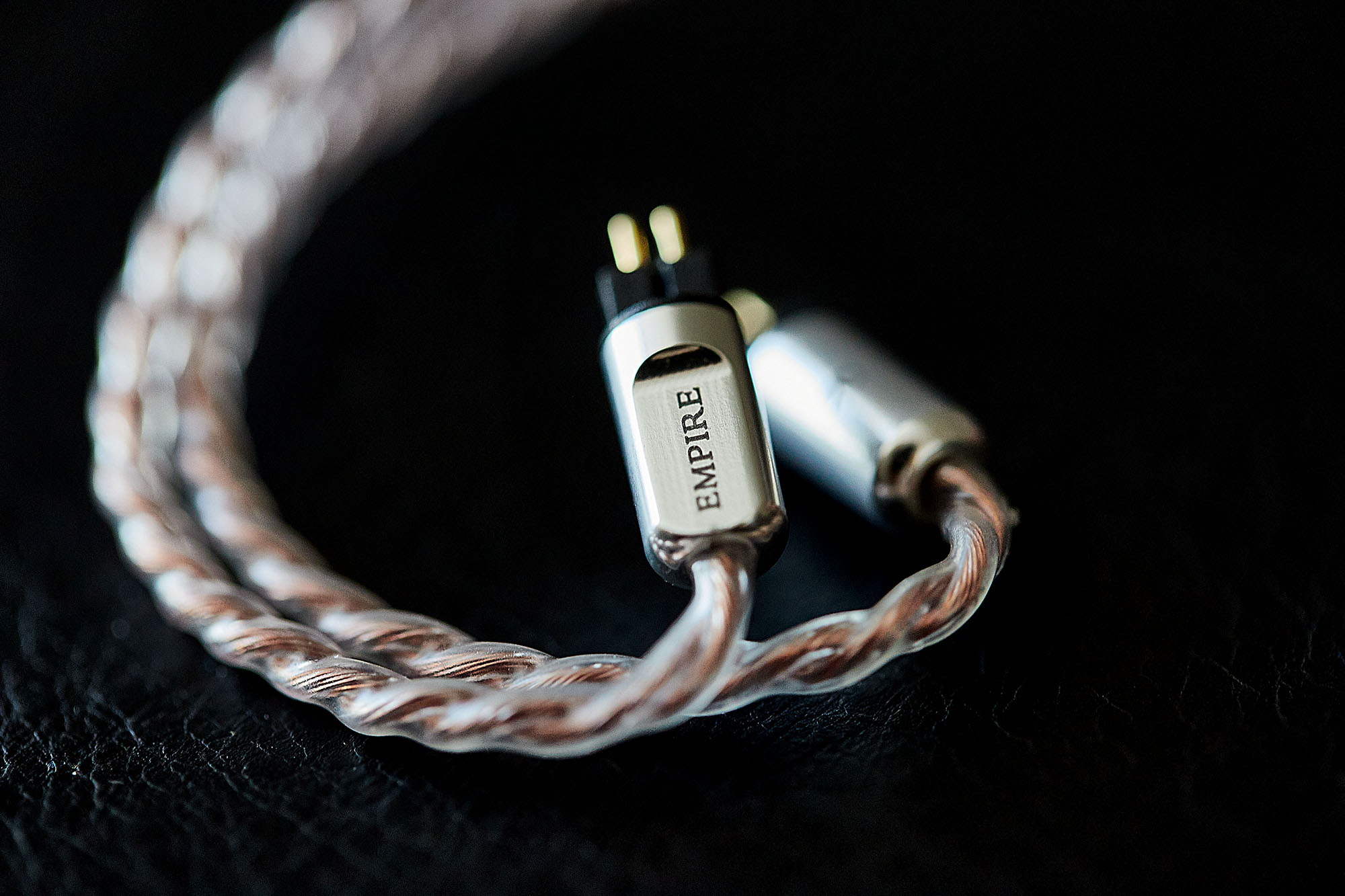Bravado (bra-va-doh) –
noun – a bold manner or a show of boldness intended to impress or intimidate.
Empire Ears does nothing by halves, and that also goes for the naming convention of their IEMs. The Bravado MkII (which I’m going to call B2 for brevity) is everything the name suggests it is. That’s not giving anything away, though if reviews aren’t really your thing, you can just take the title at face value and be done with it.
B2 is my second bite at the Empire Ears cherry, so to speak, the
legendary Legend X being the first. And here’s another spoiler: despite the similarities in name, shell shape and bass emphasis, the two are nothing alike.
I’ve also seen the B2 labelled as an ‘entry-level’ IEM, and I suppose in the context of the Empire Ears line-up it is. But that’s like saying an Audi A3 is an entry-level car. Make no mistake, B2 is a luxury IEM. I’ll be comparing it to a real entry-level IEM (BLON BL-03) and a real flagship IEM (Legend X) in the course of this review, but that’s purely semantics. Entry-level high-end IEM would be a more appropriate moniker, so keep that in mind as you’re reading this.
Let’s get started
For anyone unfamiliar with Empire Ears, the company founded and personally managed by a genius IEM designer and all-round good guy called Jack Vang, I’ll refer you to any number of articles on the company (Google ‘Empire Ears’ and you’ll see what I mean). Their
website is also a good place to start.
Likewise I’m not going to spend too much time labouring over the design and specs of the B2 itself, because again, several comprehensive reviews have already covered that ground better than I could, or care to do (the best of which is Alex Twister’s review
here).
But I should mention some basics that make B2 a rather unique IEM on its own, especially at its relatively affordable price-point for a high-end IEM.
Firstly, the packaging and accessories are similar to those you’ll get with any other Empire Ears IEM, which is to say top shelf. The presentation box is sturdy, compact and cleverly segmented, with a magnetic latch lid for the inner compartment and a pull-out drawer for the case and ear tips. You can almost smell the care and attention to detail in the construction and printing, always a good sign for a product that’s been lovingly made.
Second, the accessories themselves are not just throwaway add-ons that even high-end IEMs are often bundled with. You get genuine Final Audio E-Type silicone ear tips (all sizes), a genuine Effect Audio Ares II cable with custom labels and splitter, and Empire’s custom all-aluminium Pandora carry case, made from what feels like a solid block of chiselled metal.
Third, the IEMs themselves are made from a high-quality resin polymer and high-gloss lacquer finish, complete with what Empire calls the ‘Deep Field’ faceplate unique to B2. I’ve seen and used $6,000 IEMs that don’t look or feel this impressive, so rest assured you’re not being short-changed when it comes to build quality for your sub-$800 outlay.
It’s not all sun and roses, however, and if there’s one issue I have with B2 (in its universal form anyway – a
custom version has just been announced at the time of writing) it’s the size of the damn thing. For some reason Empire Ears decided to launch B2 in the US (along with the other MkII variants) using the larger shell first seen in the flagship Odin. Compared to the Legend X (a 7-driver IEM), the 4-driver B2 is thicker, wider, taller, and has a notably longer nozzle that only allows for a deep insert fit.
It’s a strange decision considering the Asian versions of the MkII IEMs are all made with Legend-sized shells. The first time I put B2 in my ears I immediately knew fit would be an issue. Now, fit is a very personal thing, and I admittedly have smaller ears (with smaller canal openings) than what your average American lumberjack must have, because the smallest (SS) E-Type tips just about managed to sneak into my canal and felt
somewhat comfortable, while my regular (MS size Sedna and Spiral Dot) tips put intense pressure on my canal opening and made the shells dangle awkwardly from my ears.
That’s all I’ll say about the fit, given many people won’t have any issues with it and considering how well the Odin was received, but it’s something to note if you found Odin too bulky or deep fitting. I likely wouldn’t have said anything if I had the original Asian version for review, but I can only write about what’s in front of me.
Let’s move on
If you’ve read this far, you already know that Empire’s most affordable luxury IEM is built as well as its flagships and comes with the same premium set of accessories. It may or may not fit as well as some of the others, but chances are it will, so all good there.
By most accounts, B2 bears little resemblance to the first iteration of its namesake. For one thing the driver configuration is completely different, with a pair of brand new premium electrostatic drivers joining the new Weapon IX+ (9+) subwoofer to reinforce B2’s formidable sonic firepower. In fact B2 has twice the number of drivers, but is only marginally more expensive – that’s what I call an upgrade.
The overall tuning also seems to be slightly different (if I’m reading Crin’s graphs correctly), taking on more midrange, upper midrange and mid-treble energy than the original, in line with what seems to be Empire Ears’ tuning shift towards higher-energy, higher-clarity sound. It’s not a change I’m entirely fond of (as you’ll gather from the sound impressions below), but at the same time I can understand the popularity of this type of tuning, and it’s not disagreeable with the right type of music.
Speaking of tuning, what you’ll hear can and will be influenced by the tips you choose. B2 is the first IEM I’ve used –
ever – that makes sense to me with the E-Type tips. Not only are they very comfortable (even though I object to the deep fit), they attenuate the mids and treble to the point where any harshness in those frequencies is mostly mitigated. Using Sedna or Spiral Dot tips, for example, exposes the brighter (and shall we say less refined) upper frequencies, making some tracks sound rougher around the edges than they should. So my tip with B2 is to stick with the stock tips (
and repeat that last sentence ten times just for fun).
As per usual with Empire Ears you get a smorgasbord of modern tech with your IEMs, and B2 is no different. From the 6-way synX crossover to resonance-resistive A.R.C. coating and Empire’s proprietary EIVEC e-stat transformer, nothing has been left on the cutting room floor to get the price down.
But sound quality is ultimately where the rubber meets the road. I’ll dive into more detailed sound impressions below, but if you want a TL;DR, B2 has a very fun, rather forward, somewhat steep U-shaped tuning, with bass (that’s BASS) and treble taking centre stage. Vocals are not recessed enough for me to label B2 a typical V-shaped IEM, and depending on the mix you might even hear it as a W on occasion. Make no mistake, B2 is every bit as bold as the name suggests, so if you’re after a laid-back, deckchair type of sound, you might want to look elsewhere.
Let’s dive in
At first listen, B2 is all about
bass. Knowing the Legend X as well as I do now, nothing quite compares to Empire’s subwoofer-like dynamic driver, and B2 has the latest version of the Weapon IX doing bass duty. Of course having the most powerful woofer in IEM-land doesn’t automatically make an IEM a bass canon, but it seems that’s exactly how Jack’s designed the B2.
Out the box the bass is loose and rather flabby, but it quickly tightens up with some extended burn-in (something I’d recommend for any dynamic driver IEM). After a few days of constant playback, the flabbiness is gone, and what remains is a sleek, muscular bass response that unashamedly dominates any track with even a hint of a bassline. It’s a deeper, and I daresay meatier bass tuning than even the legendary Legend, but as I’ll discuss below, it doesn’t have nearly the same level of finesse or control.
Still, I hear the bass to be very fast – especially for a dynamic driver – and very well textured. The intro drums in Toto’s anthemic
Africa are thicker and warmer than I’m used to with this track, but also very dynamic and bold, while the bassline that comes in at 2:38 in Yosi Horikawa’s electronic masterpiece,
Bubbles, is deep, thick and warm, albeit with a hint of midrange bleed.
Compared to the bass,
midrange is slightly dipped, notably the lower midrange where some male vocals and lower harmonic fundamentals are a little muted. That quickly changes as the mids slope upward towards an elevated upper midrange that gives female vocals and upper frequency harmonics much more zing and verve, with the danger of some vocals becoming shouty when poorly recorded.
In Lana Del Rey’s masterful
Dark But Just A Game (off her latest LP
Chemtrails Over The Country Club), the usually sultry vocals have a slight edge to them, not sibilant per se but ever so slightly glassy, and I suspect the elevated 5kHz and 8kHz peaks have something to do with that.
Interestingly in Chainsmokers’ radio mix of
Closer, Halsey’s vocals are slightly more recessed than the lead male vocals, and also in relation to the instruments, except for the upper registers which are sharper and edgier and touching on shouty at 3:29. B2 definitely shows more zing with this track, which should appeal to those who like their modern pop more in-your-face than chillaxed.
Treble, while more elevated than the mids, is done very well, with a fair amount of detail and no real harshness, not that I heard anyway. Also like the mids, it’s not the last word in detail, nor is it particularly articulate, but is nonetheless fairly smooth and nicely extended.
In Heart’s
Under The Sky, off their 80s superhit LP
Brigade, most of the instruments lean to the slightly thinner, slightly brighter end of the FR, especially guitars, in what’s already a bright-leaning track. Staying with instruments but of a completely different kind and completely different pace, Max Richter’s interpretation of Vivaldi’s
Winter 1 is telling in how precise B2’s treble energy can be (in the strings). It’s incredibly fast too, although the bass hits with a slightly bloated weight that masks some of the energy from the strings.
My treble impressions are coloured, excuse the expression, by my personal preference for a smoother treble presentation. I don’t mind elevated treble, but B2’s treble is, on occasion, slightly jarring. I’m not quite sure where this edginess comes from, and I might well be confusing upper-mid forwardness with excessive treble energy, but there’s a zing to the treble not unlike the one I heard with Trio, for anyone familiar with that otherwise excellent IEM. Definitely not a showstopper, but something to keep in mind.
Overall, I hear B2’s tonality as mostly natural, but with a harder edge around female vocals and some instruments. It’s quite a high-contrast sound, not compressed but one that emphasizes contrasts in the music. The upper midrange lift gives it a fair amount of clarity, so you’re not getting a thick, droll sound despite the elevated bass and midbass, and the e-stats take care of the sparkle and air that’s often missing from lesser IEMs in this price range.
What sets B2 apart from higher-end high-end IEMs is not so much tonality, but
technicalities. That’s not to say it fails technically, far from it. Stage is decently wide, but I hear more depth than width, and it’s not what I’d call holographic. Resolution is very good, but details are more macro than micro, and a detail monster it certainly is not. Nor is it particularly clinical or precise; imaging and instrument separation are both good, sometimes very good, but not something I’d list in the honors roll.
Listening to
Bubbles, stage depth is actually quite impressive, but it’s not an extremely wide presentation – which this track has in spades with the right IEM. Imaging is good, with easy-to-place effects, and I’m not struggling to tell the various ‘ball’ effects and synths apart.
Switching lanes, Heidi Talbot’s catchy folk tune
Cathedrals shows up B2’s lack of absolute resolution. This is a simple track, with a simple melody, yet richly nuanced and layered, with a massive, dynamic bassline and heart-wrenching vocals. Detail is down a few notches here, and the vocals are notably more recessed (except for the sharper upper registers). Vocals are also edgier, and not quite as sweet as I know them to be.
Overall, there’s not much to say about B2’s technical acuity other than it’s very competent and pretty much at the level I expect it to be given the combination of quality drivers, tuning and placement in the lineup. Which is to say, it’s better than what I’d expect from many IEMs in this price range, and certainly better than what I’ve heard for less money, but it’s not going to challenge the kilobucks at this year’s technical excellence awards.
Let’s compare
I don’t have any other IEMs in the $500 - $800 price range to compare it to, so my entry-level daily driver (the BLON BL-03) and TOTL kilobuck (the Legend X) will have to suffice. Of course this isn’t a fair comparison, but it should still give us a good yardstick on how B2 sounds compared to known quantities, especially if you’re familiar with said IEMs.
Starting with the BLON, I keep it as a daily driver for one reason and one reason only: it has almost pitch-perfect tonality for my preferences. I’m not even going to mention technicalities here; B2 easily eclipses the BLON in every technical metric except, oddly enough, stage width, which for me is part of the BLON’s magic formula.
Neutral with bass boost is a generic description of the BLON’s tonality, but that’s exactly what it is. Comparatively speaking, B2 is slightly warmer, punchier, edgier and more dynamic. BLON is more easygoing, with an articulate bass response that’s more sub-bass than midbass focused, with even and natural mids, and a relaxed treble that’s never sibilant or harsh.
Strange as it sounds saying it, BLON is far closer to the Legend X in its tonality than B2. In fact I’d sooner call the BLON a baby Legend X than I would the B2. I’m not sure what the B2 is a ‘baby’ of, but it’s not the Legend X.
Compared to the Legend X, B2 is bolder, more bashful, less nuanced, less balanced. It can get rather aggressive at times, whereas the Legend is almost always measured and very composed in its delivery. Subtle is not something B2 does well, whereas for all its power Legend X is equally adept at rendering music with a featherlight touch.
The biggest difference with Legend X, though, is technicalities. While the B2 is, technically speaking, a very capable IEM in its own right (as it should be given its price point and heritage), it can’t really compare with the technical acuity of its older and far more accomplished sibling.
Nor does it need to, frankly. In my opinion these are two quite different IEMs designed with different audiences in mind, and can actually be complementary in a collection if you’re into both types of signatures.
Let’s wrap
So where does all this leave us? I’m still finding my way around Empire’s design and tuning philosophy, and in B2 I now have a very different, contrasting experience to the one I had with the Legend X.
It’s no secret I prefer the Legend X – in fact it’s not even close – but given the $1400 price difference and years of fine tuning and refinement that went into the Legend’s design, that’s not really surprising.
Despite the differences between the two, there are some crucial similarities. The package, build quality and accessories are second to none. Seriously, Empire Ears is right at the top of the tree when it comes to making you feel special about an IEM purchase, and the personal service and communication I’ve had with
@Jack Vang and
@JoshWatkins from halfway across the world has been my best experience in audio thus far.
From a functional perspective, both IEMs sport Weapon IX drivers, so both are equally hard to drive. Whereas the BLON is easily driven by the powerful HiBy R8 in low gain mode sans Turbo, I’m regularly setting the R8 in high-gain Turbo mode using the 4.4mm balanced output for both Empire Ears IEMs.
Sure you can drive B2 from a phone, but you’re not going to get maximum sound quality or control without a decent amp. It also scales nicely with better sources, and although I don’t see the point of driving IEMs with desktop amps, I’ve heard from many users who have done this successfully.
B2 is made with same care, using the same DNA, as all of Jack’s creations. It has an accessible, modern music-friendly sound, and even if I don’t personally think it’s squarely in my lane when it comes to tuning preference or comfort, the margin of difference is small enough for me to recommend it unreservedly.
If you’re looking to take the next step up from a cheap(er) Chi-Fi clone that’s been expertly crafted, want a warmer take on neutral that also satisfies your inner basshead, or want an IEM that isn’t afraid to let loose with some seriously dynamic, speedy sound, you’ll find it in this newly-revised but altogether new take on the ‘Bravado’ sound.



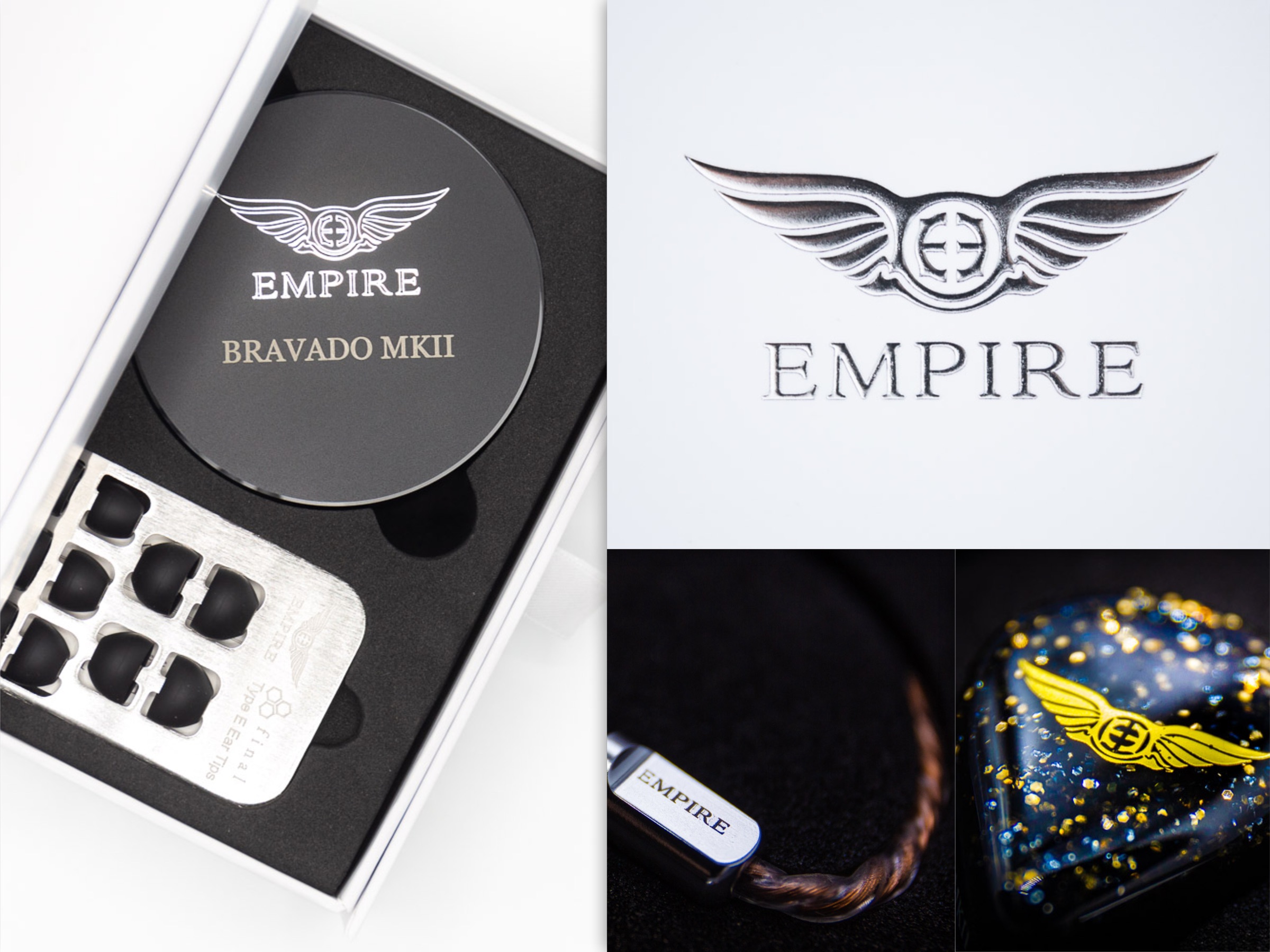

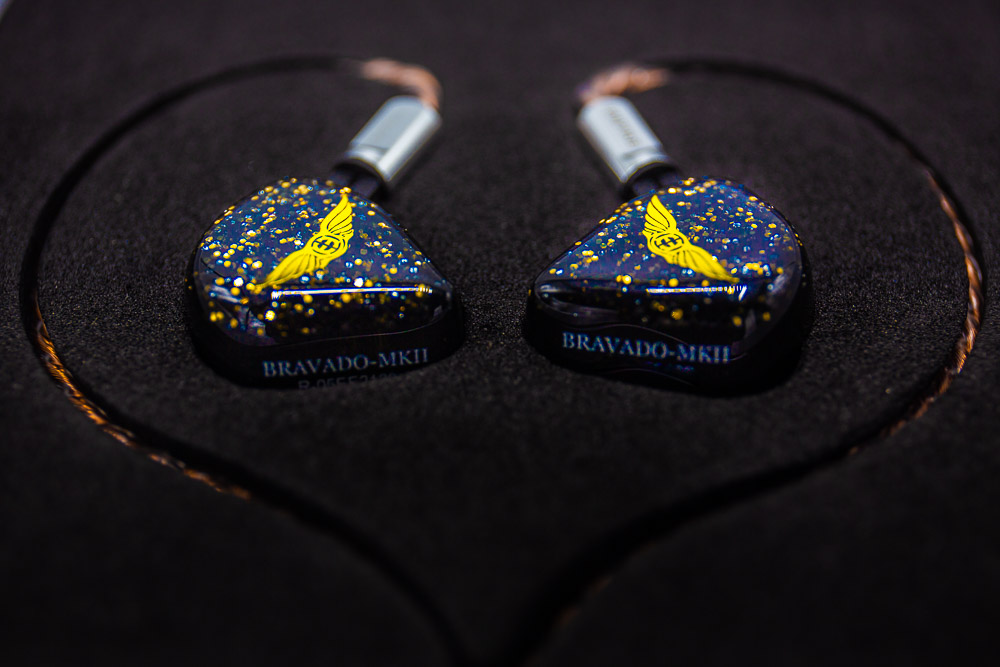





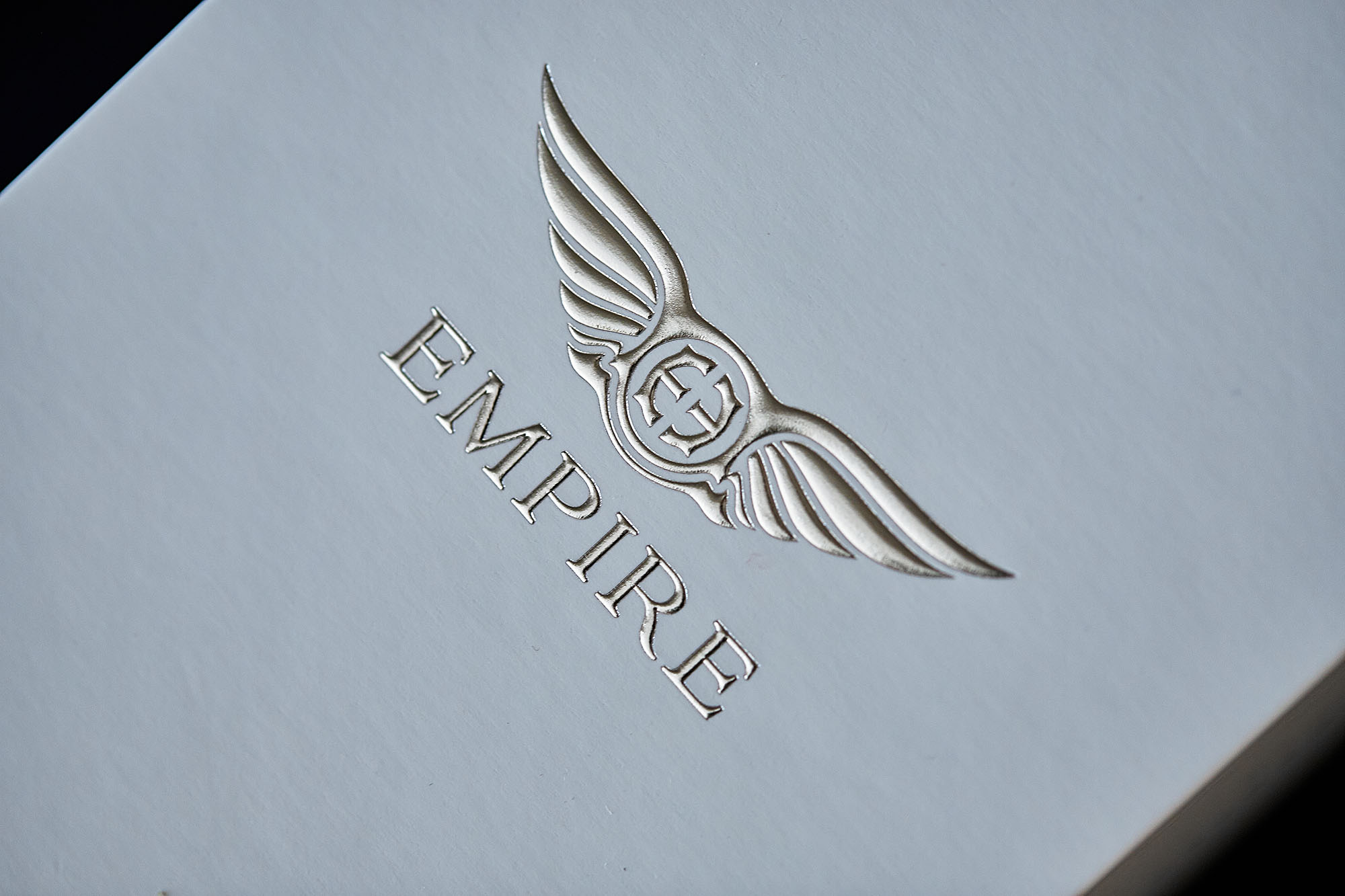

 Underneath looms the IEM and cable ready for you to rip out and enjoy the music. A classy drawer underneath reveals an aluminum sheet containing various Final Audio silicon tips to choose from. The great thing here is that Empire Ears not only gives you the standard S, M and L sizes but XS, S, M, L and XL instead, which simply gives you a wider range of tips to match to your ears.
Underneath looms the IEM and cable ready for you to rip out and enjoy the music. A classy drawer underneath reveals an aluminum sheet containing various Final Audio silicon tips to choose from. The great thing here is that Empire Ears not only gives you the standard S, M and L sizes but XS, S, M, L and XL instead, which simply gives you a wider range of tips to match to your ears.


